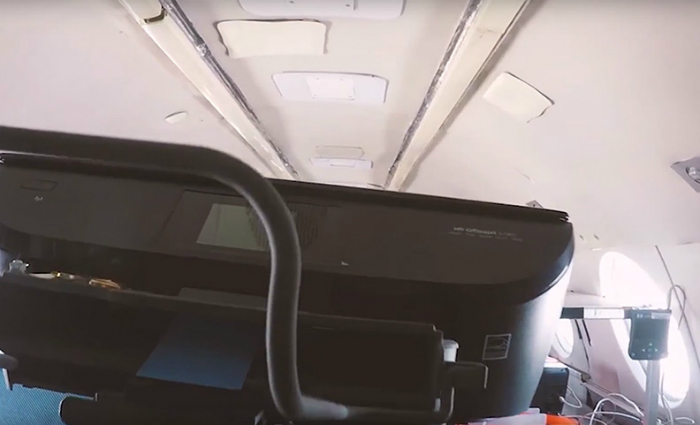HP and NASA have produced a printer for use in the International Space Station (ISS).
The HP Envy ISS will replace the previous printers used on board, last upgraded in 2000. Enrique Lores, president Imaging, Printing and Solutions, HP says, “We could not pass up the opportunity to do this. It was an incredible technical challenge.”
While the bulk of the HP ENVY Zero-Gravity printer came off-the-shelf, NASA had a list of requirements that the printer needed in order to safely operate onboard the ISS including: paper management in zero-gravity; flame retardant plastics; waste ink management in zero-gravity; glass removal; wired and wireless connectivity; printing in multiple orientations (0⁰, 90⁰.180⁰ & 270⁰ positions); environmental Testing (EMI, Materials, Acoustics, Flammability, Off-gassing, Power Compatibility, etc.)
Ronald Stephens research and development manager for HP’s Specialty Printing Systems Division, says, “NASA had a set of requirements that we had to meet: to print and handle paper management in zero gravity, handle ink waste during printing, be flame retardant and be power efficient.”
Starting from scratch, Stephens says he asked himself, “What aspect of a mechanical system like a printer uses gravity as its own regular process?”
Redesigning its HP Envy 5600, HP had to adjust the printer carriage, which hangs on a rod with gravity pulling it down into position. HP had to replace that gravitational bias with a mechanical one. HP turned to 3D printing and fast-tracked a new, experimental 3D material — 3D-printed nylon filled with glass beads — that the company had been working on for the modified space printer. The properties of this material allowed HP to swap out the multiple parts that make up the printer output tray and turn it into one that is both lighter, flexible and reliable.
If a 3D printed part breaks, HP says it can print out a replacement and send it to the ISS on the next uncrewed SpaceX Dragon cargo ship.
While typically inkjet printers place extra ink on the surface, in zero gravity, these droplets would float around, potentially being ingested or contaminating on-board experiments.
HP and NASA also removed the scanner cover, added fasteners, replaced the shell with fire-retardant plastic and added a significant amount of absorbing material in the print well to catch any wasted ink.
Stephens says, “It is expensive to put objects in space, so to test the HP Envy ISS NASA ran it on parabolic flights on Earth. Essentially, a free-fall up and down flight in a plane in which the fall of your descent gives 20-seconds of near weightlessness.
Everything ran smoothly, and NASA has scheduled the first two of fifty Envy ISS printers for February.


